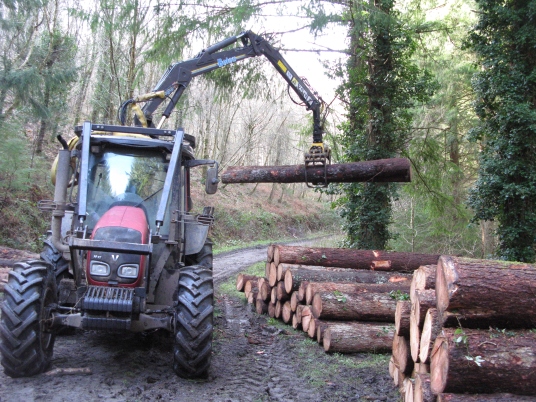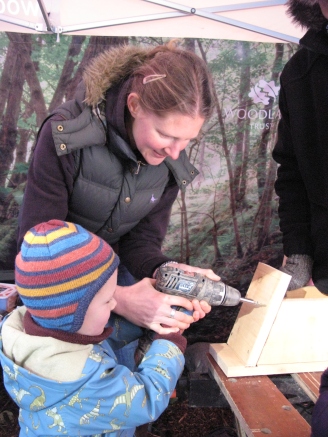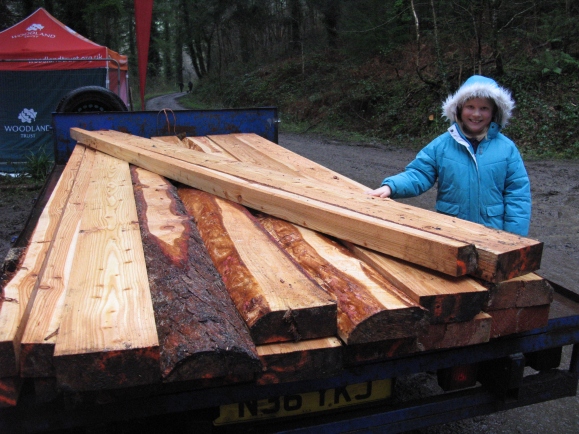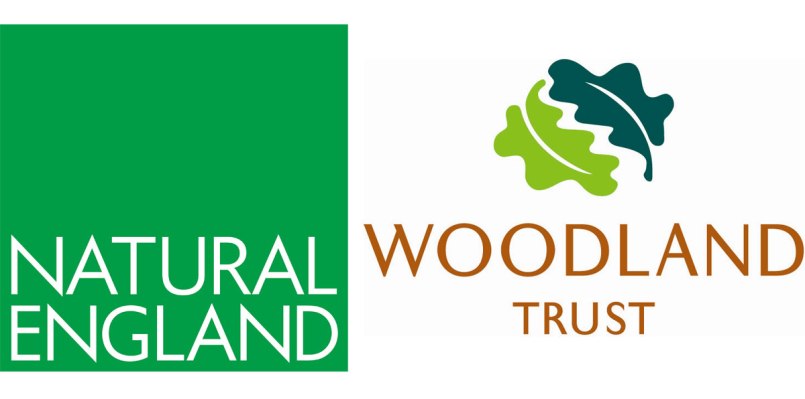Pullabrook Woods in Dartmoor’s Bovey Valley was humming with activity during a sawmilling demonstration at half term. February can be a quiet time in the woods but this week-long event attracted over 100 people from across Devon to see, first-hand, how timber can be cut to size using a mobile sawmill. The logs of Douglas fir and larch are a result of the winter woodland thinning programme where the plantation conifers are gradually removed to provide space for the natural broadleaved trees to develop. Quite often, this softwood timber can be transported from the woods to a large commercial sawmill where it will enter the wider supply chain. This event was focused on showing how local timber can be cut to order to supply the local market.

Jim White of White Wood Management and his apprentice, Jack, were running the demonstration and worked to a cutting list which included timber specifications for many uses from raised beds and structures for sheds to garden benches and bird nest boxes.
Jim said “Milling timber in this way has a number of benefits for both the local economy and the conservation of wildlife. Transport costs can be reduced by using a mobile sawmill, cutting down the road miles and avoiding unnecessary waste as the wood is milled to precise specifications before it leaves the forest gate”.


Though the weather was cold, people stayed to learn and chat about the sawmill and find out why the Woodland Trust fells conifers in their work to restore the ancient woodland of this special valley. Allowing in additional light to the woodland not only encourages the oak woods to regenerate but supports the rare lichens that make this part of the East Dartmoor National Nature Reserve a Site of Special Scientific Interest. At this time of year, the tree felling has come to a stop and the woodland birds are beginning to move around and set up their breeding territories. Some of the wood will even be used to benefit the woodland birds, as bird box kits will be produced from the timber. To add to the interest of the event, the visiting children could make a bird box from some of the local timber and some boxes will help the woodland conservation work while others were taken home for garden birds to nest in.


It’s an ideal time to be using the sawmill to extract the timber in manageable sections and none of the wood from the demonstration will go to waste. All that is cut to order will be sold and the offcuts will be taken away and used in all sorts of creative ways. One local primary school at Christow will be taking some pieces for their Forest School. It will find a home being used for making a shelter and a dry log store for their camp fire.
By the end of the week many people had enjoyed their visit to the woods and took away some new knowledge and interest about how woodland management and the supply of local materials can work together. Their comments showed how a well organised event could be interesting for families, wildlife supporters and professional woodland managers. One said “It’s great to see the Woodland Trust moving towards sustainability and marketing the timber”. Another visitor had ordered some wood for garden benches and came to see it being milled from the logs in the forest. They left, not only with their sections of timber, but with an additional sense of connection with the woods. Perhaps they will think about the Bovey Valley Woods every time they sit on their new bench at home.
by Matt Parkins

[…] in three ways – when you cut it, stack it and then burn it. Adding in a few off-cuts from the previous softwood milling demonstration, an ideal blend of fuels was made ready to take home. This will be stacked to season in preparation […]
LikeLike